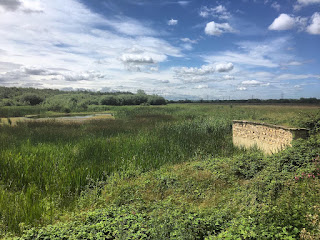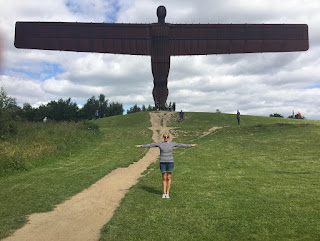Things are still very slow at the pits. John & I did our normal full site count on the Sunday morning before heading off to watch the lads play cricket together. Dusty scoring 117 not out whilst Gussy came in to bat with him scoring a very fast 32 not out.
The full count was as follows :- 20 Little Grebe (plus several broods), 7 Cormorant, 1 Little Egret, 1 Grey Heron, 16 Mute Swan, 6 Greylag, 87 Canada Goose, 7 Gadwall, 4 Teal, 344 Mallard, 1 juvenile Pochard, 72 Tufted Duck, juvenile Sparrowhawks in plantation, 8 Buzzard, 1 kestrel, 21 Moorhen, 102 Coot, 2 Oystercatcher, 5 Little Ringed Plover, 63 Lapwing, 4 Green Sandpiper, 2 Common Sandpiper, 6 Black-headed Gulls, 20 Lesser Black-backed Gulls (plus this fledged chicks), 60 Stock Dove, 80 Swift, 1 Kingfisher, 3 Green Woodpecker, 1 singing Meadow Pipit, 36 singing Reed Warblers, 2 broods of Lesser Whitethroat (plus one singing), Sedge Warbler, Willow Warbler, 3 Raven. Also 6 Painted Lady (worn migrants)
The full count was as follows :- 20 Little Grebe (plus several broods), 7 Cormorant, 1 Little Egret, 1 Grey Heron, 16 Mute Swan, 6 Greylag, 87 Canada Goose, 7 Gadwall, 4 Teal, 344 Mallard, 1 juvenile Pochard, 72 Tufted Duck, juvenile Sparrowhawks in plantation, 8 Buzzard, 1 kestrel, 21 Moorhen, 102 Coot, 2 Oystercatcher, 5 Little Ringed Plover, 63 Lapwing, 4 Green Sandpiper, 2 Common Sandpiper, 6 Black-headed Gulls, 20 Lesser Black-backed Gulls (plus this fledged chicks), 60 Stock Dove, 80 Swift, 1 Kingfisher, 3 Green Woodpecker, 1 singing Meadow Pipit, 36 singing Reed Warblers, 2 broods of Lesser Whitethroat (plus one singing), Sedge Warbler, Willow Warbler, 3 Raven. Also 6 Painted Lady (worn migrants)








































